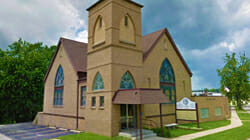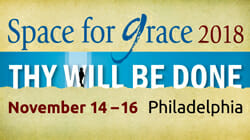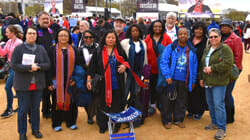Church’s ABHMS-inspired feeding ministry finds success in partnership

The Bible includes many references to collaboration, not the least of which is found in Ecclesiastes: “Two are better than one, because they have a good reward for their toil” (4:9, NRSV). And nothing could be more true at First Baptist Church (FBC), Brazil, Ind., where the Rev. Mark Thompson eagerly explains that the church’s youth feeding program succeeds because of partnerships throughout the county, including those with nonprofit organizations, businesses, individual volunteers and other churches.
Like the church’s various other community ministries, the feeding program—which serves anyone aged 18 and younger in the county—grew out of a mission engagement-related workshop led by American Baptist Home Mission Societies (ABHMS) in 2011.
Fundraising is one way that that those outside FBC support the effort. FBC, Thompson points out, averages 100 attendees on Sundays and operates on less than $100,000 yearly.
“When we started getting involved in the community and finding partners,” he says, “other churches started doing things. But they were better at raising funds. We don’t have funds ourselves, but we’re able to do the ministry itself.
“The money did not come out of our church budget,” he adds. “Our church was the hub—storing, assembling and everybody showing up to help.”
Monday through Friday this past summer, Thompson says, the congregation prepared and delivered to front doors more than 27,000 bagged lunches that typically include such items as a hot dog, chips, fruit chews, bottled water, pudding cup or apple sauce cup. A partnership with Catholic Charities allowed FBC to obtain food at a reduced cost, according to Thompson.
“The summer lunch program is amazing,” says the Rev. Soozi Whitten Ford, executive minister of American Baptist Churches of Indiana and Kentucky. “I have had the opportunity to observe the lunch preparation and participated with them in the delivery to the children in their neighborhoods—unlike most other feeding sites that expect the children to come to them to receive their meal. The love and care that is shown in the simple act of delivering the sack lunches brought tears to my eyes, as I saw how the kids responded, and the joy it brought to those who were serving.”
Volunteering is another way that the community partners in FBC’s effort. During the school year, Thompson says, personnel from community organizations gather at FBC Wednesday nights to assemble a weekend’s worth of food to put in student backpacks or lockers. Students receive a two-week food supply to sustain their families during Christmas break.
In recent years, approximately 200 volunteers assembled and delivered two weeks of food to the homes of 350 children and youth for Christmas. In addition to providing a $25,000 grant, the local energy company added its employees to what became a volunteer roster of approximately 200—prompting one man to call it the largest gathering of volunteers he’d ever seen, Thompson recalls.
“We engage volunteers,” says Thompson. “When a volunteer walks through door to help, we make sure they have a job to do. We give them an assignment. The backbone of any movement like this is volunteers.”
ABHMS’ missional church transformation resources are available online.






